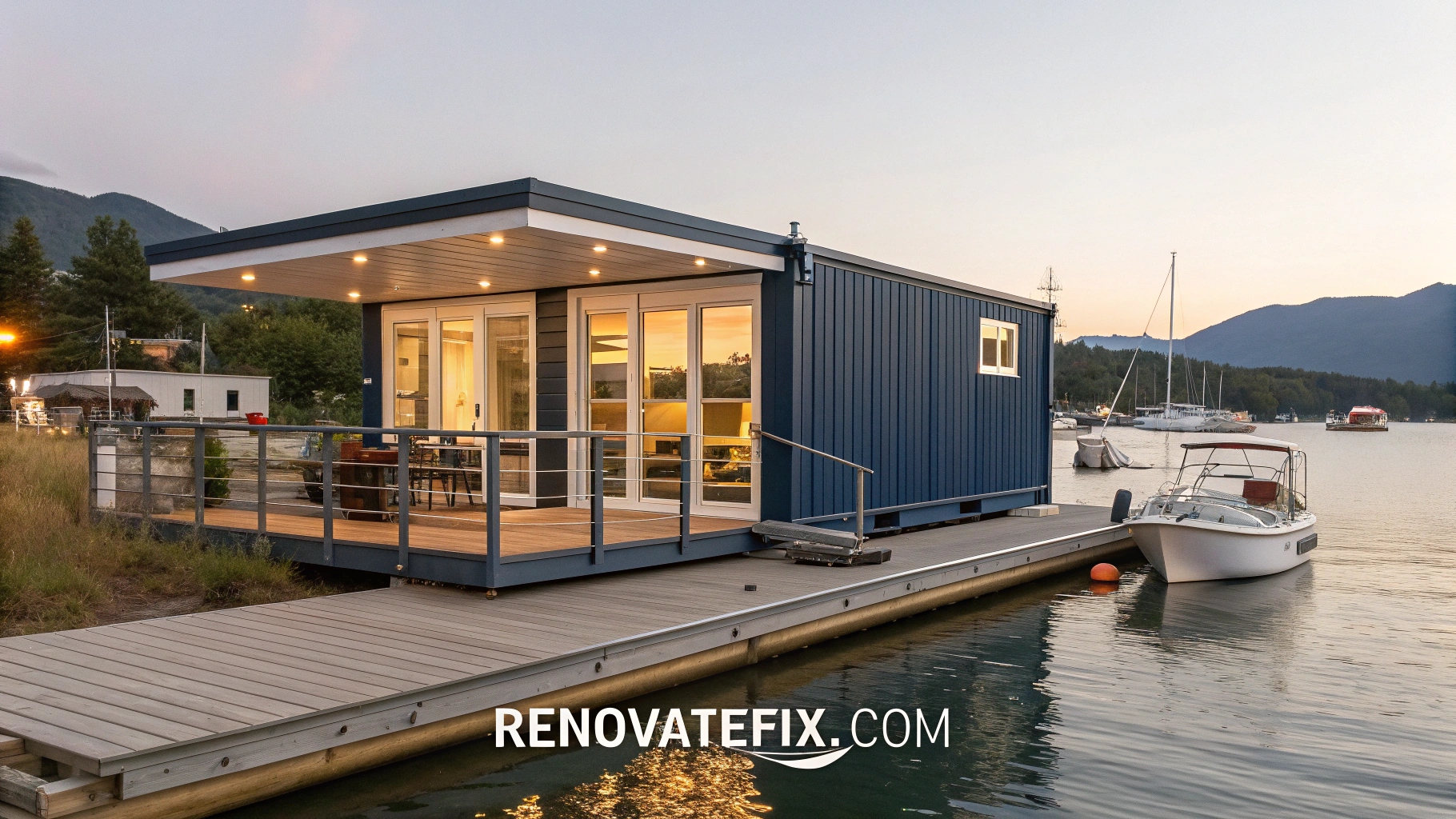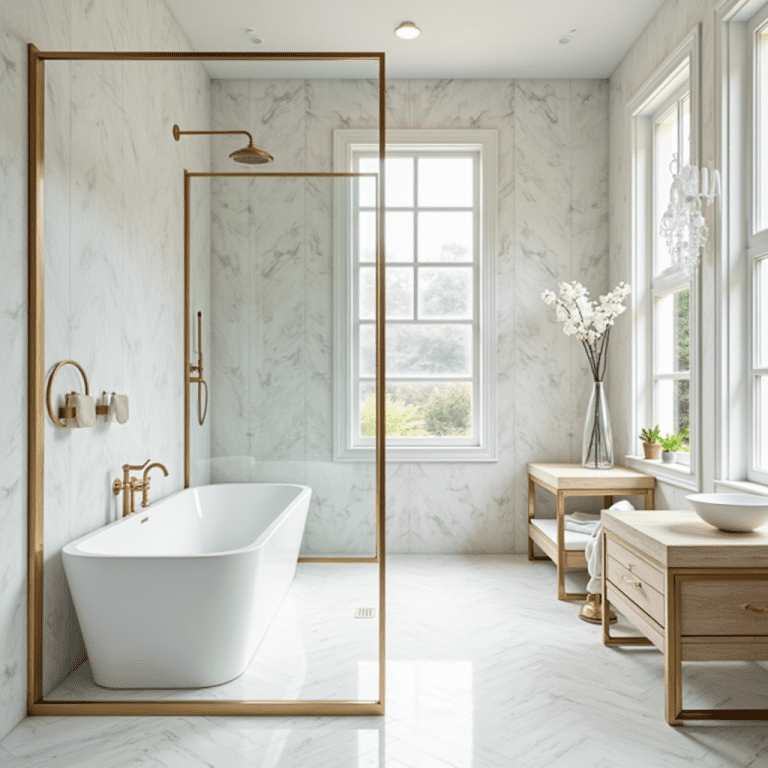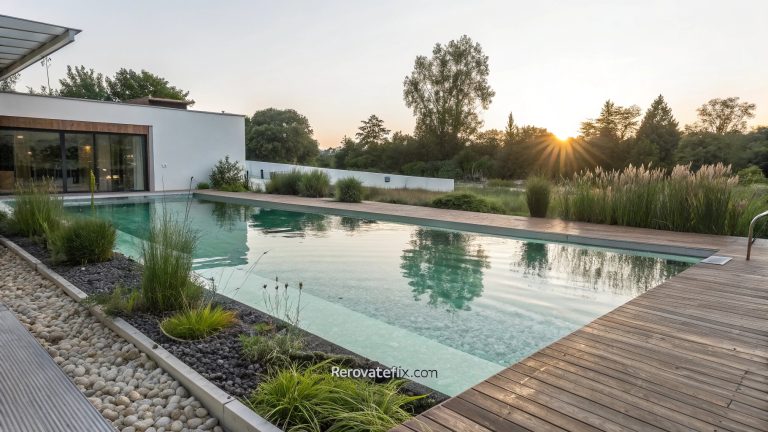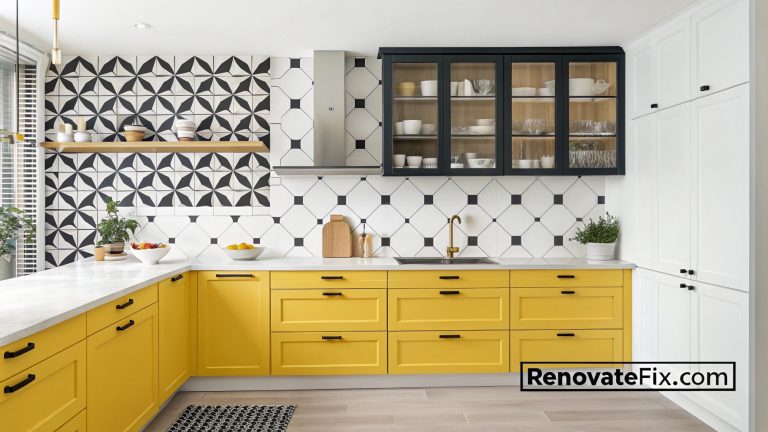Innovative Container House Concepts Ideas for Sustainable Living
Repurposing shipping containers into livable spaces has revolutionized architectural possibilities, offering affordable, eco-friendly housing alternatives with distinctive aesthetic appeal.
These modular structures provide remarkable versatility, allowing for quick construction and creative customization while maintaining structural integrity.
From minimalist single-unit dwellings to expansive multi-container compounds, these steel boxes offer endless possibilities for those seeking unconventional yet practical housing solutions.
This exploration of fifteen outstanding container house concepts showcases how industrial materials can be reimagined into striking, functional homes that balance sustainability with style.
1. Rooftop Garden Container Retreat
A single-story container dwelling crowned with an extensive living roof system, merging natural elements with industrial architecture.
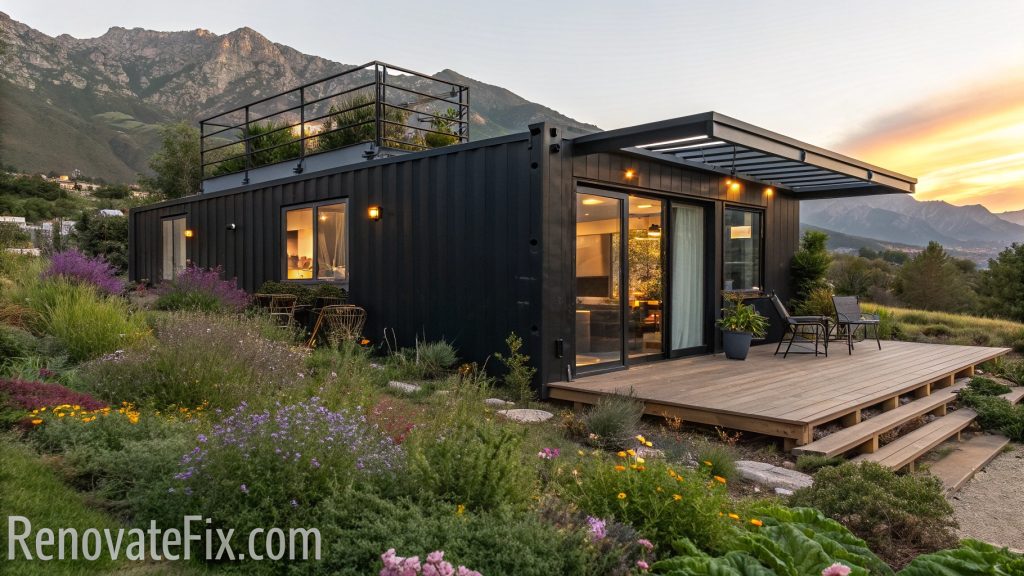
Native plants cascade down sides while providing natural insulation, reducing energy costs significantly throughout changing seasons.
Strategically placed skylights allow sunshine to flood interior spaces, creating bright, welcoming rooms beneath lush greenery that attracts local wildlife and pollinators.
2. Glass-Walled Forest Haven
Expansive floor-to-ceiling glass panels replace entire container walls, dissolving boundaries between interior comfort and surrounding woodland.
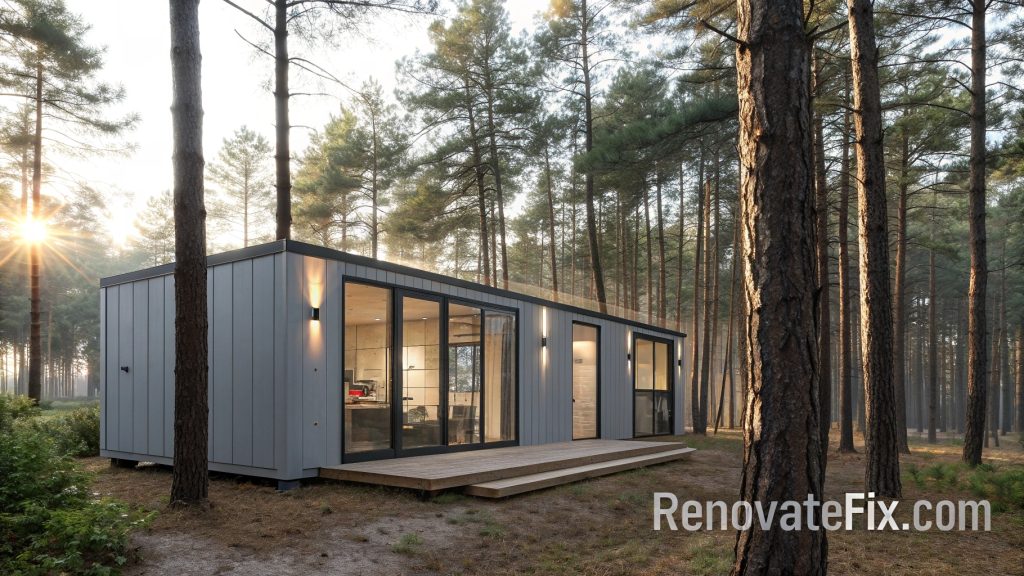
Morning light filters through tall pines, casting dramatic shadows across polished concrete floors while maintaining complete privacy from nearby roadways.
Minimal interior partitions maximize spatial flow, allowing nature views from every corner of this transparent forest dwelling.
3. Stackable Urban Micro-Apartments
Vertically arranged containers form compact yet functional urban living spaces, addressing housing density challenges while maintaining individual privacy.
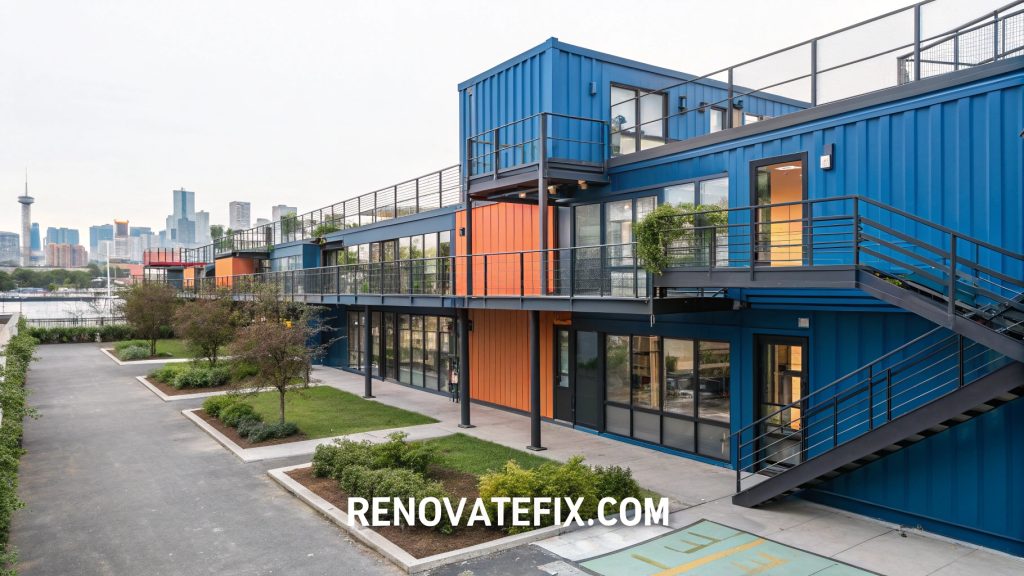
Each unit features ingenious space-saving solutions—pull-down beds, foldaway desks, sliding partitions—maximizing every square inch without sacrificing comfort or style.
Communal rooftop areas provide social gathering spaces among container clusters, fostering community connections within dense city environments.
4. Desert Mirage Hideaway
Reflective exterior cladding helps this container structure virtually disappear into arid landscapes, mirroring surrounding sand dunes while deflecting intense solar heat.
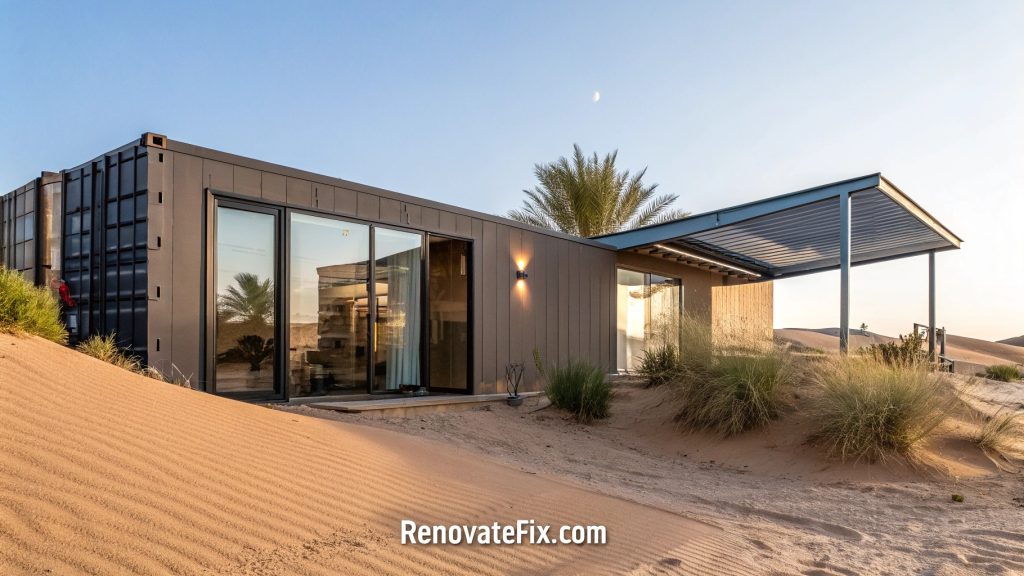
Thick insulation maintains comfortable interior temperatures despite extreme external conditions, requiring minimal additional cooling systems throughout scorching summers.
Sliding shade panels adjust throughout day, controlling light penetration while creating fascinating shadow patterns across minimalist furnishings.
5. Floating Harbor Residence
Waterproofed containers mounted atop pontoon foundations create distinctive floating homes perfect for coastal communities facing rising sea levels.

Wrap-around decking provides abundant outdoor living space mere inches above gentle harbor waves, allowing residents to fish directly from home.
Maritime-inspired interior features salvaged boat components—brass fixtures, teak flooring, porthole windows—honoring nautical heritage while embracing sustainable reuse principles.
6. Mountainside Cantilever Construction
Dramatically positioned containers extend outward from steep hillsides, minimizing foundation requirements while maximizing breathtaking valley views.

Floor-to-ceiling windows dominate cliff-facing ends, creating spectacular panoramic vistas from bedroom and living areas built within surprisingly compact footprints.
Structural reinforcements allow safe overhang without damaging fragile mountain ecosystems, demonstrating harmony between daring architecture and environmental respect.
7. Underground Eco-Bunker
Partially submerged containers utilize earth’s natural insulating properties, maintaining steady interior climate with minimal energy consumption year-round.
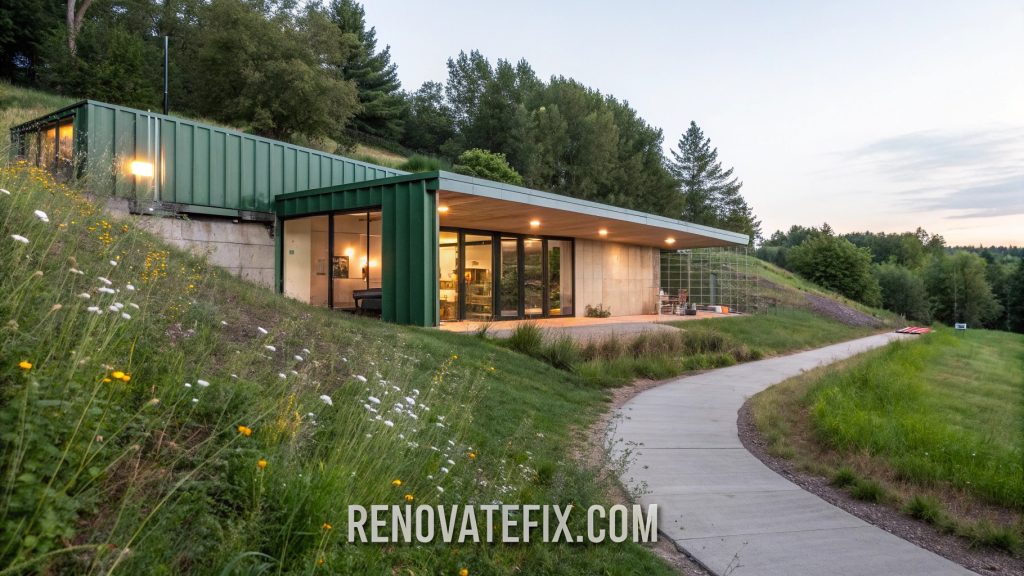
Green roof systems blend seamlessly with surrounding landscape, making structures nearly invisible from certain angles while supporting native plant communities.
Front-facing glass walls flood subterranean living spaces with natural light while providing residents private views of wildlife visiting adjacent meadows.
8. Modular Family Compound
Multiple containers arranged around central courtyard create private family compounds easily expanded as needs grow over time.
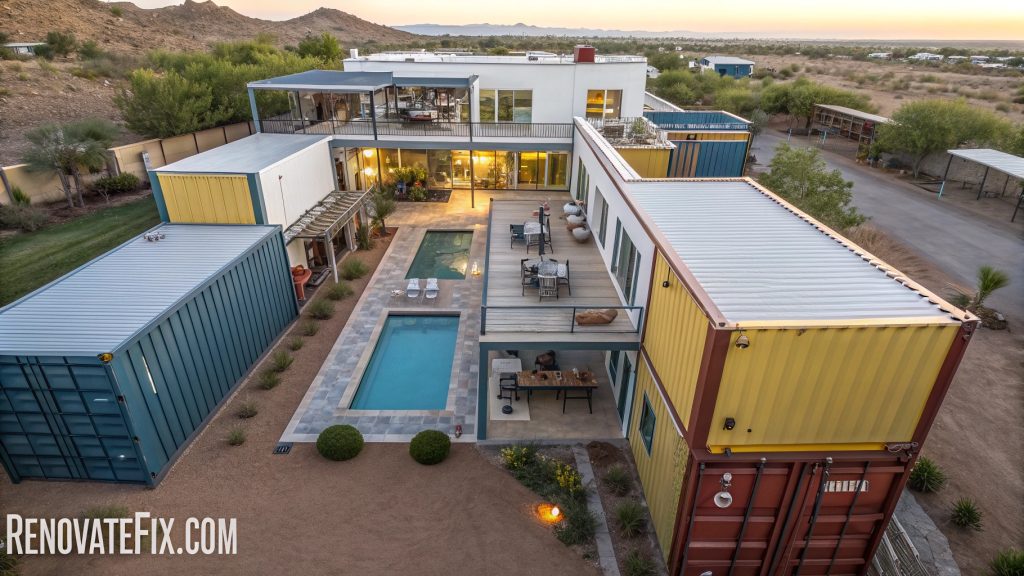
Covered walkways connect separate functional zones—sleeping quarters, kitchen facilities, work spaces—while providing sheltered outdoor circulation during inclement weather.
Individual containers maintain personal privacy while shared central garden fosters family togetherness through outdoor dining areas and play spaces.
9. Off-Grid Mountain Cabin
Self-sufficient container cabin powered exclusively through renewable energy systems perfect for remote locations beyond utility infrastructure.
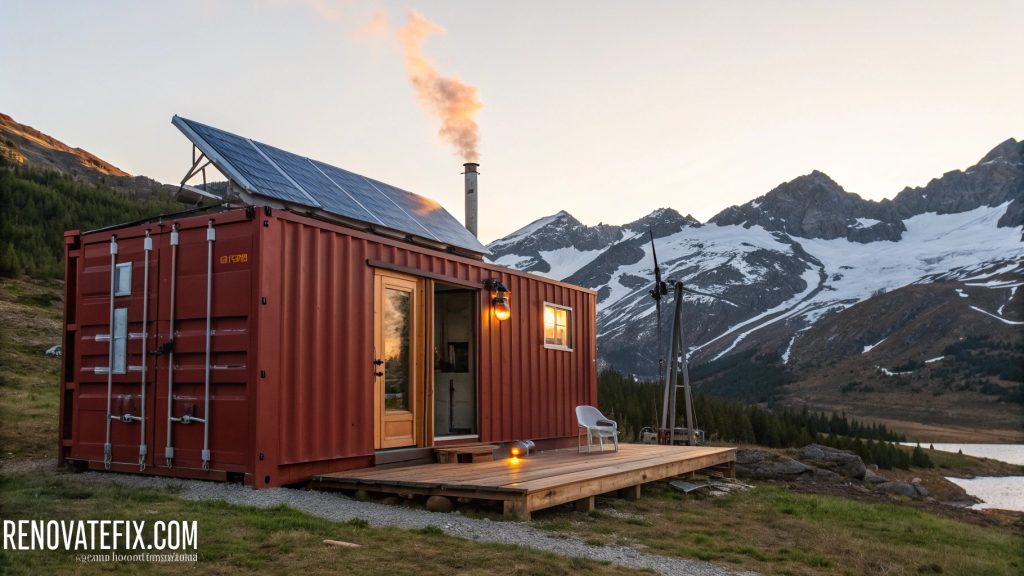
Rooftop solar arrays coupled with compact wind turbines generate ample electricity while rainwater collection systems provide clean water year-round.
Highly efficient wood stove crafted from repurposed maritime components provides both heating and cooking capability during winter months without external fuel requirements.
10. Artist Studio Compound
Purpose-built container spaces dedicated to creative pursuits—painting studios with north-facing clerestory windows, ceramic workshops with specialized ventilation, photography darkrooms with precise light control.

Modular design allows customization for specific artistic disciplines while maintaining cohesive architectural language throughout creative campus.
Convertible indoor/outdoor workspace walls create flexibility during pleasant weather, allowing natural environment to inspire artistic production.
11. Beachfront Stilted Retreat
Elevated containers mounted on robust pilings provide safe coastal housing solutions resilient against storm surges and rising tides.
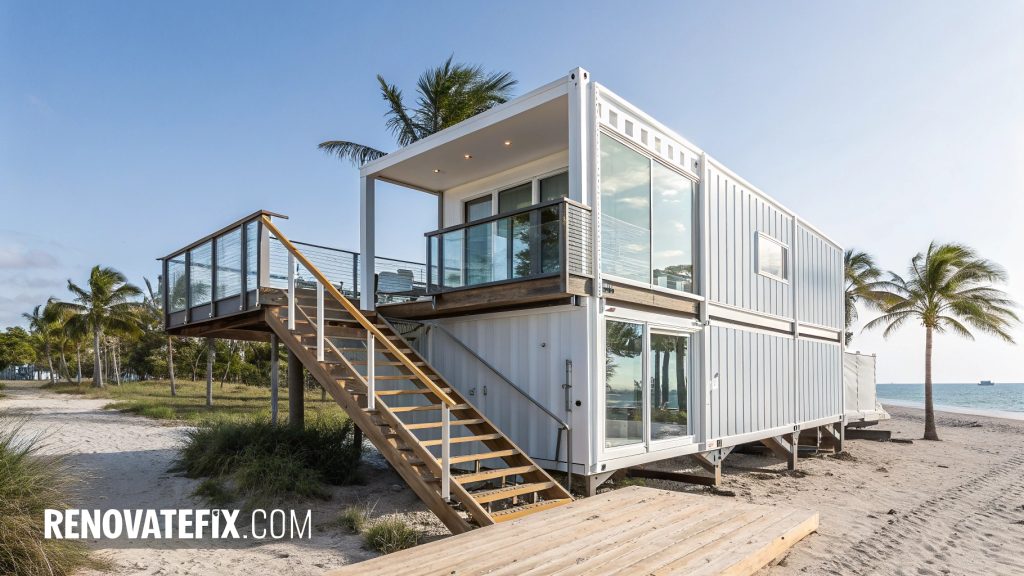
Wrap-around decking creates expansive outdoor living space perfect for watching spectacular sunsets across oceanfront locations.
Specialized marine-grade finishes protect against salt corrosion while operable louvered systems harness cooling sea breezes, reducing air conditioning requirements significantly.
12. Minimalist Writer’s Haven
Single container transformed into distraction-free writing sanctuary featuring built-in bookshelves, ergonomic work station, and strategically positioned reading nook with expansive natural views.
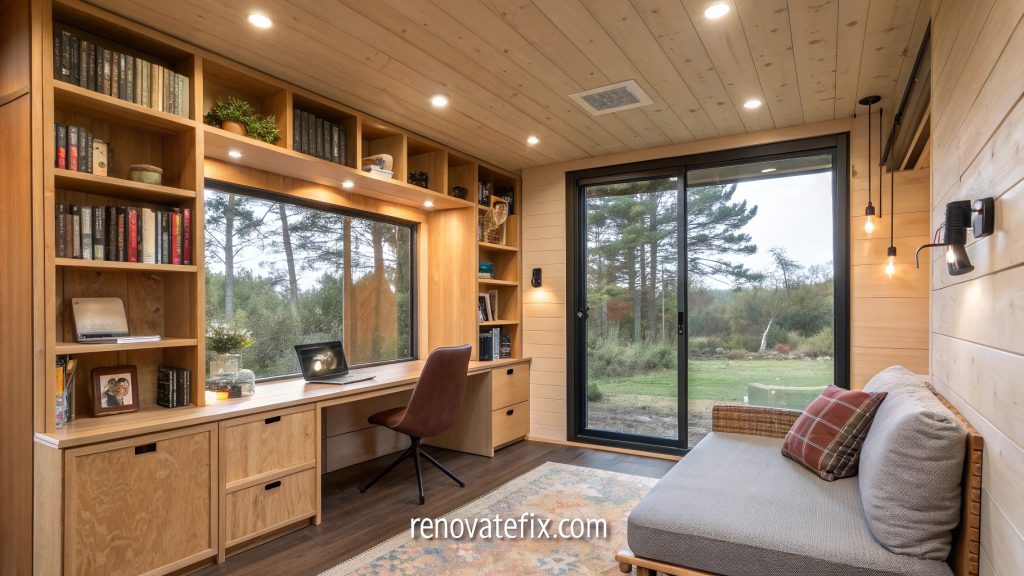
Acoustic treatments absorb sound completely, creating perfect silence for deep concentration while subtle lighting schemes adjust throughout day supporting natural creative rhythms.
Limited connectivity options prevent digital interruptions, fostering deep work environments increasingly rare in hyper-connected world.
13. Snow Country Ski Chalet
Heavily insulated containers specifically engineered for extreme winter environments, featuring extra-thick spray foam protection and specialized heating systems maintaining warmth despite blizzard conditions outside.

Mud room entries with built-in equipment storage accommodate winter sports gear while preventing snow tracking throughout living spaces.
Strategic window placement captures maximum winter sunlight while framing spectacular mountain views from cozy interior gathering spaces.
14. Multi-Generation Family Home
Expansive container complex accommodating extended family living through thoughtfully arranged private and shared spaces promoting intergenerational connections.
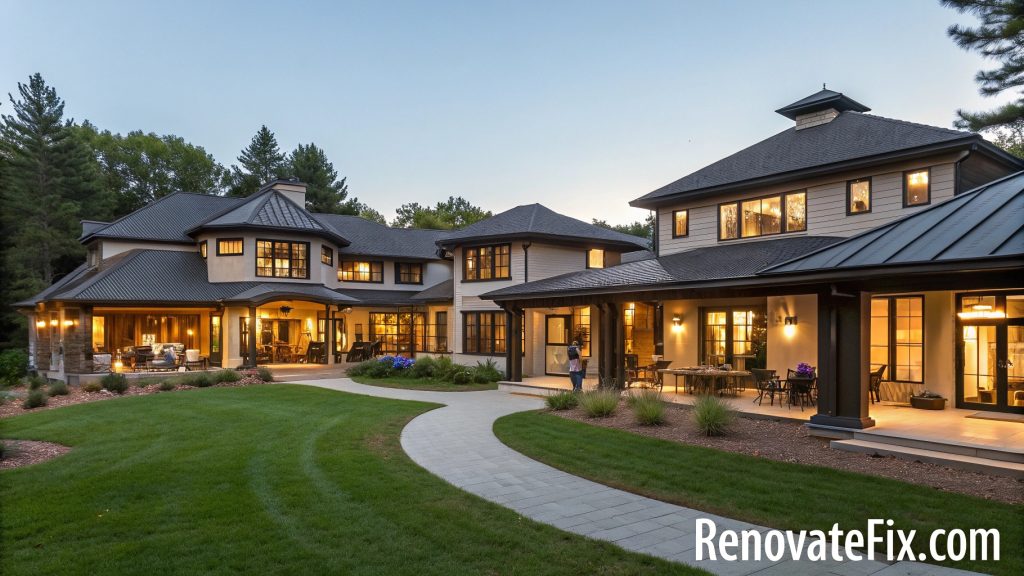
Central gathering areas encourage family meals and activities while separated bedroom wings provide necessary privacy for different age groups.
Accessible design features support aging-in-place, eliminating steps between containers and incorporating universal design principles throughout shared spaces.
15. Butterfly Roof Rainwater Collector
Distinctive butterfly roof design channels rainfall into central collection system, providing significant water self-sufficiency for household needs.
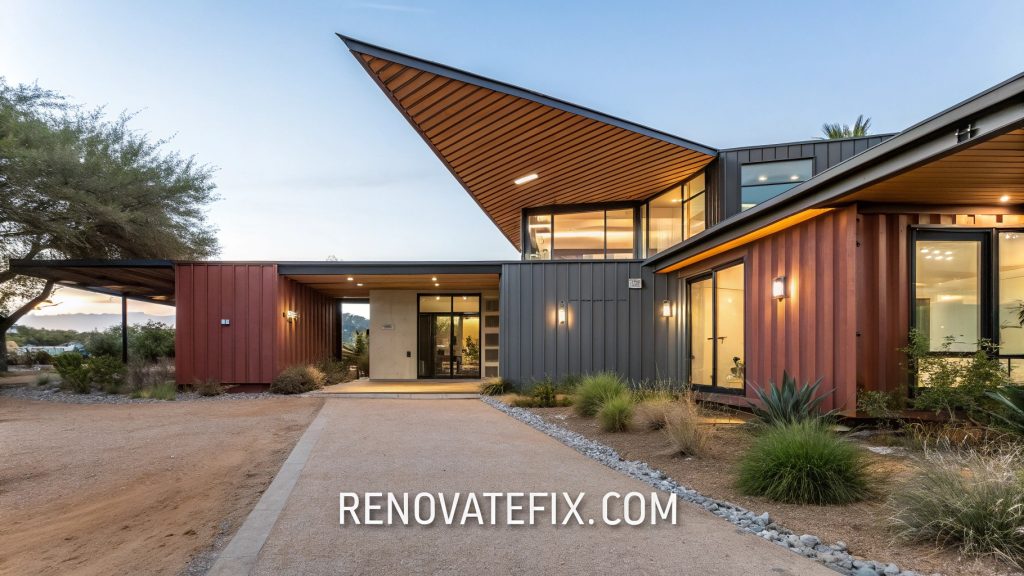
Inverted roof creates dramatic interior ceiling heights while allowing for clerestory windows bringing light deep into living spaces.
Visible water management systems become architectural features, highlighting sustainable functionality while creating striking visual identity different from typical container aesthetics.
Conclusion
These fifteen container house concepts demonstrate how shipping container architecture continues evolving from novelty experiment to legitimate housing solution addressing diverse needs across varied environments.
By reimagining industrial materials through creative architectural vision, these structures offer sustainable alternatives to conventional construction while providing distinctive aesthetic character impossible to achieve through traditional building methods.
Whether seeking affordable urban housing, remote off-grid retreats, or simply distinctive architectural expressions, container homes represent an exciting frontier in residential design where innovation merges with practicality.
As environmental concerns grow alongside housing affordability challenges worldwide, these adaptable steel structures offer compelling solutions worth serious consideration for forward-thinking homeowners and communities alike.

